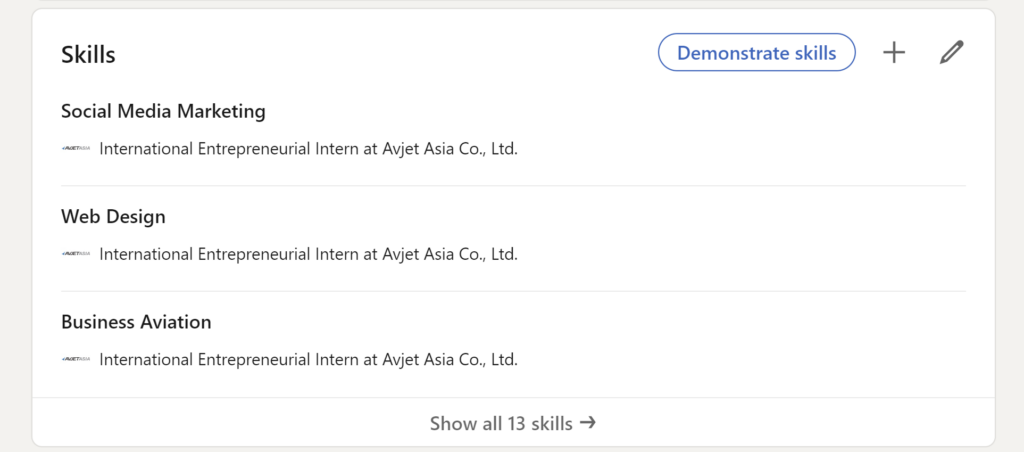When I was a freshman in college, multiple professors emphasized the importance of networking and preparing for the future. They recommended stopping by their office hours and connecting with my peers in my classes. At the time, I figured it was something to worry about later, I simply wanted to enjoy being a new freshman and all that college had to offer. I was afraid I didn’t know enough to start preparing for the future and I wasn’t sure how to go about it, so I put it off for two to three years and I still wasn’t sure where to begin.
I think networking intimidated me because I wasn’t sure what that meant for someone like me. Thankfully, with the help of professors, and a few assignments to visit my university’s career services center, I now know what I need to do to prepare for the future. If I could do it over again, I would make a LinkedIn my freshman year, and here’s why:
- LinkedIn is essentially a social media platform
- “Networking” isn’t as hard as I thought it was
- Making a profile is painless
- It can only ever help you
LinkedIn is essentially a social media
I’m sure you’ve at least heard of LinkedIn, but if you’re like me, you might have thought it was something only the guys with startups had. However, LinkedIn is now one of my greatest tools. If you haven’t had the chance to check it out, let me give you the lowdown (see what I did there) on what it’s all about.
LinkedIn is similar to any other social media in the sense that when you create your profile, you can connect with and follow other users. In this case, you add your peers to your “network” which is like sending friend or follow requests on other platforms. When someone accepts this request, you’re listed as connected and that allows you to see updates they post about the work they’re doing or the jobs they receive. This is a great way to foster relationships by congratulating your connections on the progress they’re making on their goals, while they do the same for you.

So, who should you add as a connection? The answer: everyone. Seriously, add professors you’re close with, the friends you meet in class, you can even add friends from high school that you don’t see as often now. The more connections you have the better, which brings us to my next point.
Networking isn’t as hard as you think
Networking, as Google describes, is about making professional connections. And while that can sound stuffy, I promise it’s not. The peers in your classes, especially your major classes, are going to be entering the same industries that you are, around the same time that you are. Those friends, group project teams, final-cramming study session buddies, and your roommates are going to become your professional contacts in a few short years. Having connections with as many people as possible exposes you to different companies and positions you might not have known about.
LinkedIn has a section on your profile where you can list skills or proficiencies. What’s really cool though, is that you can actually have your connections endorse a skill that you list. For example, I’m an English major. I’ve listed writing and editing as skills I possess on my LinkedIn and friends from my English classes can endorse those skills, showing potential employers that I am capable in those areas.

One of the most important lessons I’ve learned about networking is to talk to your professors. Whether you’re excelling in their class or struggling, taking the time to set up a few appointments throughout the semester or stopping by their office can go a long way. Many professors have worked in their respective fields before teaching, and are probably connected with companies that you might be looking to work for after graduation. Professors can give excellent advice about what to expect from a job in your area of study, and what elective classes might be more beneficial than others. They can even recommend you for internships, or help you find research opportunities.
Professors are also some of the best people to ask for letters of recommendation and they can’t recommend you if they don’t know you. Connecting with them on LinkedIn is invaluable and boosts your appeal to future employers
Making a profile is painless
I’ve listed a few of LinkedIn’s features that I find remarkable, and I’ve really only scratched the surface. I highly recommend signing-up. Making a profile only requires your name, an email, and a password. Once you create an account you can list previous job experience, skills you have, academic focuses, and interests, but don’t feel like you have to set everything up in one sitting.
I find myself editing and updating my LinkedIn profile often; refining something usually takes more than one try, and LinkedIn isn’t any different. The great thing is that LinkedIn is very accessible, it’s easy to create an account and maintain it, while the benefits of having it are simply stellar.
It can only ever help you
I’ve listed a lot of the positive aspects of having a LinkedIn in this article, and while I am passionate about it, I really didn’t find any negatives of having a profile. The way I see it, LinkedIn is a place to brag about your professional endeavors, outstanding achievements, and your accomplishments thus far.
Usually, your resume will only cover what’s pertinent to the position you’re applying for, but your LinkedIn can be a place that holds your academic and professional history.
Ultimately, preparing for your professional future doesn’t have to be intimidating. Networking can look like making friends in classes and stopping by office hours, making a LinkedIn profile can make recruiters aware of you, and some of your class projects can translate to skills or accomplishments you can list on your page. LinkedIn is a tool to help you succeed in whatever profession you hope to have.
